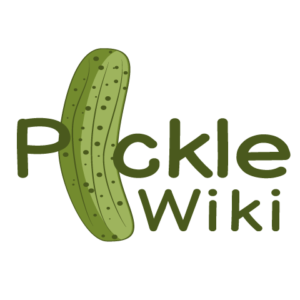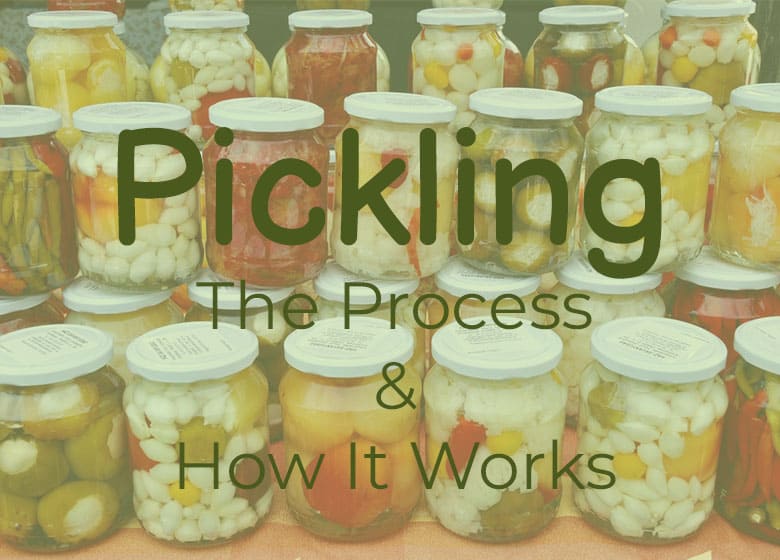The pickling process allows you to take most vegetables, fruits, meats, and eggs and preserve them for a certain period of time. Pickling is an ancient preservation method, but over the years, it’s been adapted to infuse all kinds of new flavors into the foods. Pickling can even change the texture.
The pickling process involves taking most vegetables, fruits, meats, and eggs and preserving them in an acidic brine solution or vinegar. It is an excellent solution for preserving perishable food items for a couple of years, as well as adding flavor. So, everyone should know how to execute the pickling process to tuck certain food items away for safekeeping.
If you’re interested in how the pickling process works, stick around. Next up is just about everything you need to know about pickling, and why you need to know it, is coming right up.
How Does the Pickling Process Work?
So, you have a bunch of leftover tomatoes and have no idea what to do with them. Maybe you can freeze them, but surely they will lose any of their flavors. Well, you don’t need to toss them in the trash, but instead, try the pickling process!
The pickling process is an extremely effective and efficient solution to preserving your overflow of fruits, vegetables, meats, or eggs. It allows your items to be preserved for a couple of years without the risk of decay. So, if down the road you forget that bag of corn at the grocery store, or the world goes to hell, you can easily grab your pickled corn as a delicious recipe substitute.
The pickling process has been around for centuries and has ties to 2000 BCE in India. Although, some say the pickling process got its start 4,000 years ago when the ancient Mesopotamians soaked cucumbers in brine.
It is an extremely easy process, and its popularity has thrived for centuries. When we look into ways to improve our food content and diet, we should listen to our ancestors as they have perfected the skills we are searching for.
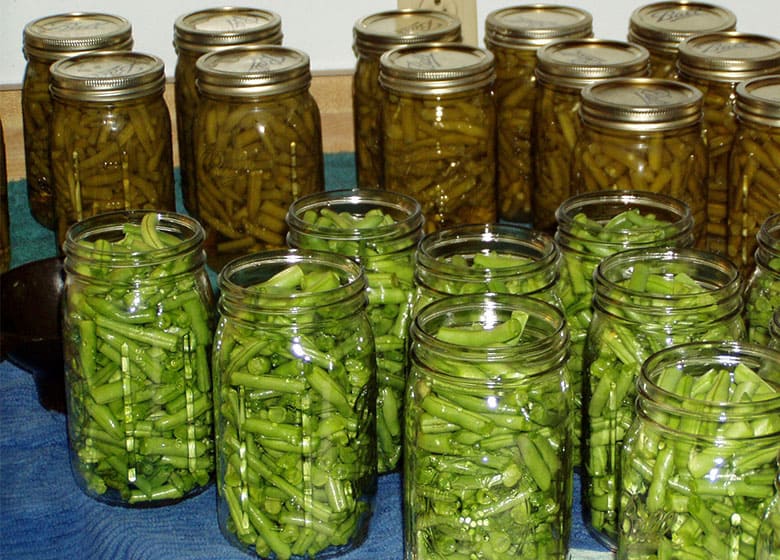
Is Pickling Different from Fermenting?
The pickling process and the fermenting process are similar, but they have many differences. First, the pickling process is more simple and can easily be done at home. The fermentation process is a little bit tricky, and it requires some extra steps that may prevent you from easily executing this process at home.
Like the pickling process, the fermentation process has been practiced for centuries. It is believed to originate from 7000 BCE in China. In addition to this, the fermentation process also utilizes microorganisms. However, in the fermentation process, the microorganisms change carbohydrates into alcohol.
There are two different types of fermentation:
- Alcoholic fermentation, which is extremely common in making bread, beer, and wine.
- Lactic acid fermentation, which instead of converting carbohydrates to alcohol, it converts them into lactic acid.
Both methods hold many health benefits, and both include benefiting the digestive system. By creating good bacteria and probiotics, both the pickling process and the fermentation process can assist you in having a healthy diet.
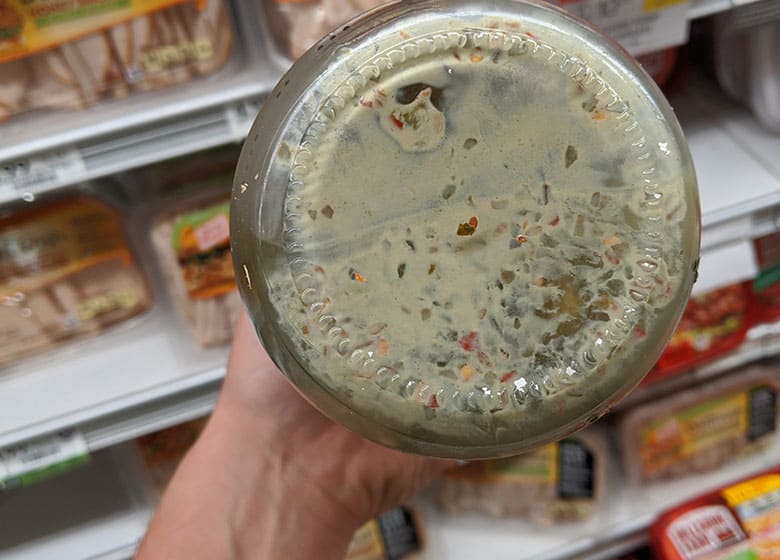
The pickle first traveled to America with Christopher Columbus on his boat. Once they made it to the Americas, they became a hit sensation.
Pickles can be made using both the pickling process and the fermentation process. However, they were surprisingly fermented first before the pickling process became popular.
Pickles Across the World
Pickling and fermentation have been adapted throughout the years. Almost every culture has developed its own form of pickles or fermented foods that have become a popular part of their cuisine.
Here are some examples of where you might find pickled or fermented foods in different cuisines:
- India’s Pickled Mango
- Italian Giardiniera
- German Sauerkraut
- South Korean Kimchi
- Sweden’s Pickled Herring
How to Perfectly Execute the Pickling Process
The pickling process sounds very complex, with all of the mixing and measuring. Not to mention the boiling and temperature checking. But it’s really fairly simple and straightforward.
What Should I Know Before I Pickle?
Before you begin your first pickling adventure, there are a few things to know. Keeping these in mind will help you know that you’re on the right path toward a successful pickling session.
Will the Pickling Process Change My Food’s Texture or Taste?
The pickling process will change your food item’s texture and taste. Since you are soaking food items in a mixture of vinegar, salt, sugar, and spices, your food shouldn’t taste the exact same as it did before the pickling process.
Your food should become a little bit softer after conducting the pickling process. After blanching and soaking in the brine solution, your food items will become slightly mushier than before.
However, this shouldn’t scare you away from trying the pickling process, as your food items will still taste deliciously unique.
Your food will also become a little bit bitter after conducting the pickling process. It is not an overbearing taste. It may take a certain palleted person to become obsessed with pickled foods, but that does not mean that they are not delicious and nutritious.
In addition to this, you may find that the longer you keep your food items in their pickled jars, the more they will take on a bitter taste. If you want to try to avoid this, you may want to attempt to eat your pickled food items within the first year of brining. If you eat your pickled food items within the first year, they won’t have as much time to absorb the brine solution.
Will the Pickling Process Change My Food’s Nutrients?
The pickling process is extremely effective at preserving your food’s natural nutrients. Unlike cooking, the pickling process does not deplete your food items of their nutrients levels.
If anything, the pickling process adds more to your food item’s nutrients as it encourages probiotics to cultivate. So, after pickling your food items, you don’t need to worry about them losing their nutrients.
In this next section, we will discuss why pickling is different from fermenting, and what you should know about both processes.
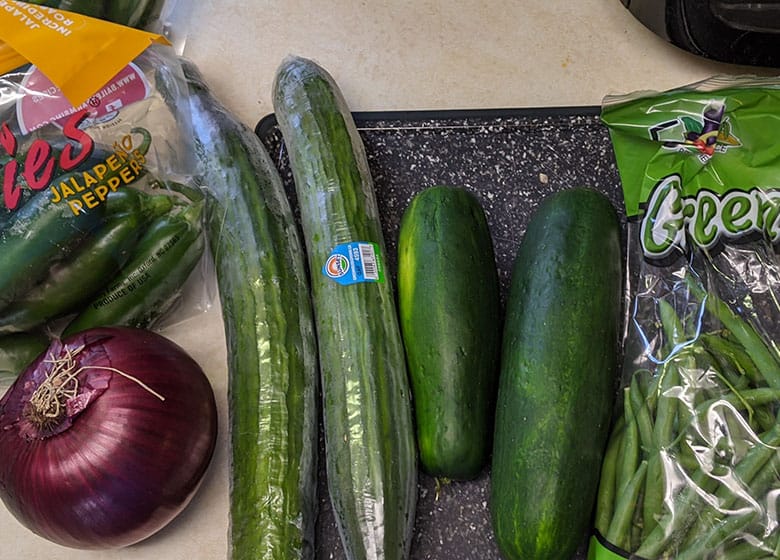
What Ingredients Do I Need for Pickling?
This may sound hard to believe, but you cannot pickle old food items. I know the pickling process leaves food with a softer texture, but that means it is important to begin the pickling process with hard, fresh foods.
When you decide to pursue the pickling process for your food items, you will want to avoid any mushy or spoiled foods. If the food items are fresh and solid, they will pickle more easily and will be less likely to decay. If the food items are already going bad, then that process will speed up during pickling.
If you grow your own produce items for pickling, you may want to harvest your food items at least 24 hours before beginning the pickling process. This will give them enough time to ripen, but will also ensure that your produce is fresh and ready to be pickled.
In addition to this, it is extremely important to include the correct materials when pickling food items. I wouldn’t recommend grabbing just any salt, vinegar, sugar, or water as they can cause a variety of reactions with your food items.
What Salt Should I Use?
When considering which types of salt to use for your brine mixture, you will want to pick out a canned or pickling salt. These are the best types of salts to use for your brine mixture.
These types of salt do not contain a noncaking material, so your mixture won’t be cloudy or negatively impacted. In addition to this, it is not recommended to pursue a flakey salt for your brine mixture.
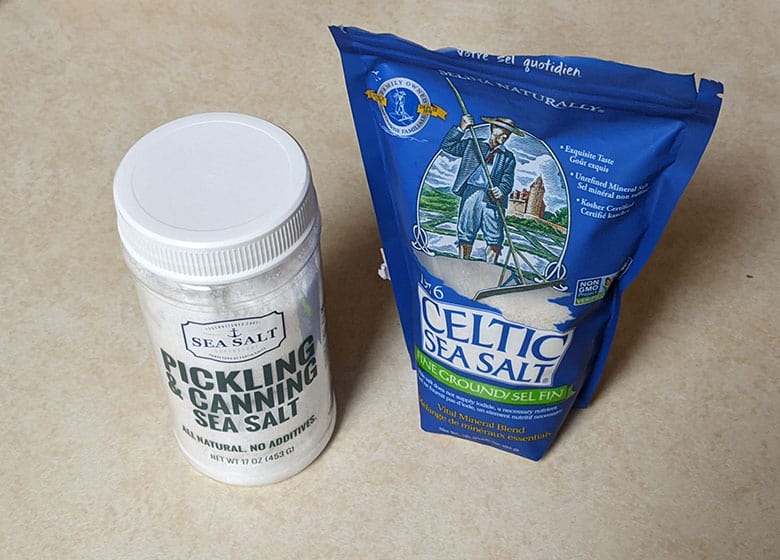
Be sure to use salt and vinegar in your brine mixture for your pickling process, as it is not recommended to use a salt substitute in your brine mixture. If you exclude salt in your mixture, your food items will not properly pickle and may rot while in storage.
What Vinegar Should I Use?
When considering which types of vinegar to use in your brine mixture, you will want to include a white distilled vinegar with an acidity of 5 percent. In addition to this, you can use cider vinegar with a 5 percent acidity.
It is not recommended for you to use any other type of vinegar, as these will cause a strange and undesirable reaction to your pickling process. Using other types of vinegar will change the taste or texture of your pickled food items, and you may not want to use them afterward.
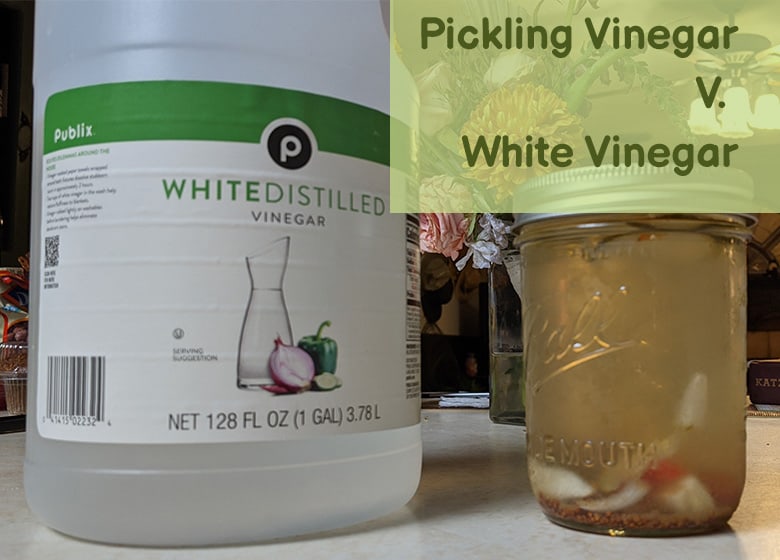
In addition to this, it is not wise to use a vinegar substitute for your pickling process. Vinegar is an essential ingredient for the pickling process, and it must be included to ensure that your food items pickle properly.
What Sugar Should I Use?
So, you’ve got your salt and your vinegar picked out, now what? Now, you need to invest in some sugar for your brine mixture.
White granulated or brown sugars work the best for your pickling process, as they tone down the bitterness of the salt and vinegar. I wouldn’t recommend using corn syrup or honey as a sweetener for your brine mixture, as these can change the flavor of your food items.
In addition to this, I would not recommend using any other substitute for the sugar in your brine mixture. Even if you enjoy the taste of vinegar and salt, the pickling process can be overpowering, and the sugar will help mild the flavors.
Is There A Certain Type of Water I Should Use?
Don’t forget to add water! It is said that soft water is better to use than hard water, as it is easier for your food items to effectively pickle.
If you want to turn your hard water into soft water, just boil it! Once boiling, you will see a slight residue form at the top of your water, but you can just scrape it off to turn your mixture into pure soft water.
In addition to this, if you have a little bit of both, you can just dilute the solution to create a soft water combination. You want to make sure that you use a soft water solution so your food items can effectively pickle.
What Spices are Best for your Brine?
You can add spices to your brine mixture, as this will give your food an added boost of flavor. You should try to avoid using powdered spice mixes, as they will make your food items dark and cloudy.
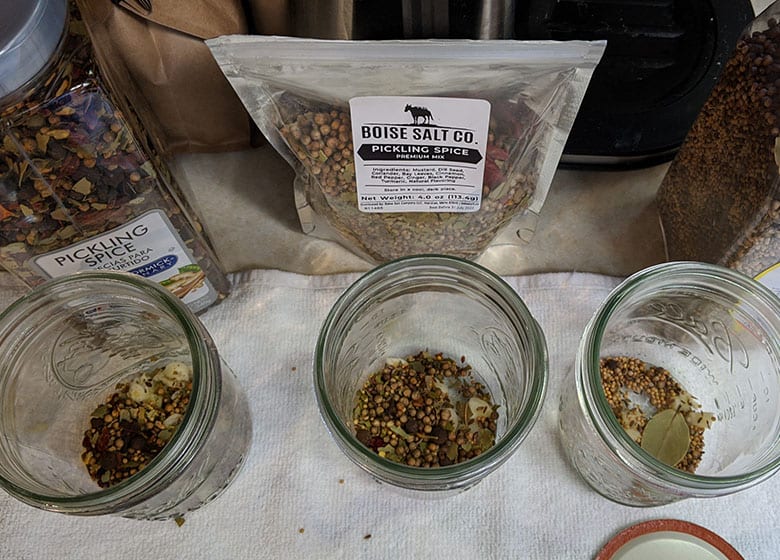
If you take a piece of whole spice and wrap it in a cheesecloth, you can dip it in the mixture and remove it before the canning process. You want to remove it before the canning process to ensure that it does not rot while in the mason jar.
The Bottom Line for Ingredients
The bottom line is it is not recommended that you increase or decrease any proportions of salt, vinegar, water, or sugar to your brine mixture. Each measurement has been thoroughly tested to advance the pickling process, and any decrease or increase in these amounts will ruin your brine mixture.
I know we all like to add our own little quirky flares to our recipes, but it is best not to mess with the science of the pickling process.
What Materials Do I Need for Pickling?
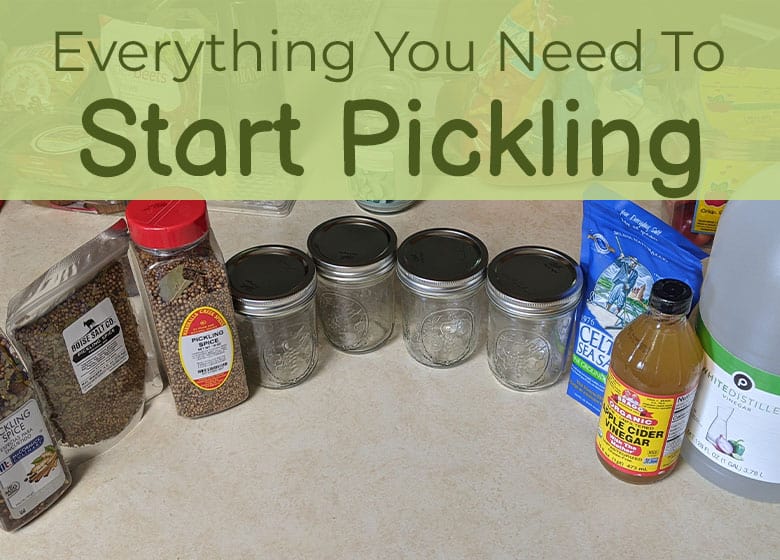
Many popular spices to include in your pickling process includes dill, pickling spice, allspice, and mustard seeds. This will create a unique flavor that will surely enhance your pickled food items. Before you begin the actual pickling process, round up all of your supplies.
Which Jars do I Use?
The types of mason jars that you use during your pickling process are extremely important. You will want to make sure you invest in some large, tight mason jars for your pickling process. This will help you ensure that your mixture remains air-tight to prevent molding.
In addition to this, you don’t want to use mason jars that are too small because you won’t be able to add enough bringing liquid to your foods. If this happens, your food items will not pickle properly and will begin to decompose inside of the jar.
If you are worried about your mason jars not closing properly, try placing a piece of parchment paper or a clean, thin towel between the lid and rim of the jar. Close the jar cap with the parchment paper or towel in place, and this should aid in keeping your liquid concoction sealed tight.
You can also add rubber bands around the mason jar’s lid to ensure that it remains closed and tight for storage purposes.
What Cooking Utensils do I Need for Pickling?
The types of pots and cooking utensils that you use during the pickling process are extremely important, as using certain materials can cause strange reactions with your brine mixture.
When you heat up your pickling liquids, you should avoid using pots that are made of copper, brass, iron, or galvanized utensils. These materials will cause a negative reaction with your brine mixture, and they can even be toxic. Instead, try using pots made from aluminum, glass, or stainless steel.
Ready… Set… Pickle
Now that you’ve gathered all of your ingredients and supplies, you’re ready to get started. Here are the steps you’ll need to get your pickle on.
Clean Your Materials
First, you are going to need to clean your food items. If you’re dealing with some produce items, you will want to soak them in a water and vinegar solution for about 20 minutes.
This will remove any dirt or other particles from your product before soaking them in your brine solution. If you’re dealing with meat or eggs, simply make sure that they are clean and free from dirt or other particles before beginning your pickling process.
Next, you will want to thoroughly clean your mason jars. Not only is it important to clean your mason jars to remove any pesky dirt or debris, but it ensures that nothing will negatively react to your brine mixture.
Prep Your Ingredients
Then, you will want to prepare your produce and other food items by cutting and blanching them. Blanching refers to the process where you lightly boil your produce items. This helps them retain their texture and flavor throughout the pickling process.
First, cut your produce so they will fit in your mason jars. If your produce is small, like olives, then you probably won’t need to cut them into a smaller size. Then, you will want to heat some water in a pot to a boil, and blanch your produce for a couple of minutes. Afterward, you will be ready for the next step in your pickling process.
Choose Your Seasonings
The next step in your pickling process is to season your food items. You will want to place your food items in their mason jars, and be sure to leave some room at the top and sides so your brine mixture can thoroughly saturate your items.
Be sure to only add about ½ teaspoon of spices, or one small cheesecloth filled with your choice of spices. You don’t want to overindulge in spicing your food items while pickling because the vinegar and salt will already add a lot of flavors.
Prepare the Brine
Then, you will want to prepare your brine mixture for your pickling process. For a basic pickling recipe, you will want to combine a mixture of equal parts vinegar and water, which will equate to about two cups each.
Next, you will want to add about 1 ½ teaspoon of sugar. After combining all of the necessary ingredients in your cooking pot, you should bring your mixture to a boil. Once your mixture is boiling, remove it from the heat.
Put Everything in Jars
Take your mason jars filled with food items and pour the brine mixture into them. You will want to ensure that your food items are completely covered in the brine liquid for your pickling process to work effectively. Any exposed areas will leave your food items at risk of rotting.
Seal in Jars
Lastly, you will want to close your mason jar tightly to make sure that your food items are air-tight. Afterward, you can refrigerate your mason jars overnight and transfer them to your cabinets the following day. It is important to refrigerate your pickled mason jars to prevent the hot brine mixture from overcooking your pickled food items.
Why You Should Learn the Pickling Process
Anyone that considers themselves a foodie should know the pickling process, and at least a few basic pickling recipes. Not only will you be preserving food, but you’ll also be packing even more flavor into some of your favorites.
As long as you know the pickling process, salty snacks and delicious accouterments will always be on hand in your home.
The pickling process is extremely useful because it allows you to preserve food items for a couple of years without the risk of them spoiling. Let’s say you received a bunch of olives, maybe as a gift, and you don’t know what to do with all of them. You could force yourself to digest a hundred martinis, but let’s face it, that’s not as good of an idea as it sounds.
Health Benefits
As I said, the pickling process is not very complicated. It sounds sciency, but don’t let that intimidate you. It has been used for centuries, and it is an extremely efficient way to preserve your extra food items. Everyone should know how to pickle certain foods to preserve them and gain some extra probiotics in their system.
It’s not hard to include more probiotics in your diet with pickles. But you are making your own pickles really up to your pickle game. The process of pickling releases a probiotic product that helps benefit your gut flora.
This can improve your skin, immune system, and increase your gastrointestinal health. In addition to this, it could lower your chances of getting depression.
So, it is not hard to believe that the pickling process has been around for centuries. The process does not require refrigeration, and it increases the number of good bacteria found in your system.
For years, people have used this technique to keep themselves healthy, and it is important for everyone to be able to carry on this process. Kimchi, which is Korea’s famous pickled cabbage, has been around for thousands of years. Not only is it full of those wonderful probiotics, but it’s also been known to have positive effects on hair and skin.
In addition to this, pickles are stock-full of natural antioxidants and probiotics. While cooking pickles can break down some of these antioxidants, the opposite is true of the pickling process, which can preserve their nutrients.
Also, your pickles may help lower your blood pressure. That’s because of the pickling process, as it is said that vinegar helps lower your blood pressure and can help prevent diabetes. The salt may not help with your blood pressure, but the benefits of the vinegar should outweigh the negative aspects of the salt.
Along with the possibility of lowering blood pressure, pickles can help relieve muscle cramps. If you’re feeling achy in the mornings, an easy solution can be to pickle your own pickles!
By conducting the pickling process on your leftover cucumbers, you can have easy access to muscle relaxation. This can relax multiple parts of the muscles in your body, including the stomach, feet, neck, and arms.
Food Preservation
Pickling is an efficient means of food preservation, as we’ve mentioned. If you grow your own vegetables or have chickens for eggs, you might end up with a surplus of foods. Rather than let it go to waste, you can pickle what you don’t use right away, and you can preserve with your favorite pickling method.
There are plenty of pickle recipes that require refrigeration, but refrigerating pickles isn’t always necessary. This makes pickles an option for those that don’t have a refrigerator. As long as they’re not kept in extreme heat, some pickled items can last months.
Final Thoughts
The bottom line to the pickling process is it is an extremely effective and efficient solution to preserving perishable food items. It doesn’t require a lot of materials, but you need to make sure that you pick the right ingredients to effectively pursue the pickling process.
Sometimes, we really need to listen to our ancestors. The pickling process has been around for centuries, and our ancestors utilized it to keep their diets healthy and their foods plentiful. In addition to this, it is important to follow pickling recipes to a T, as any alterations can drastically change the food’s taste or texture.
The pickling process is not something to be afraid of, and just about anyone can do it! All it takes is a bit of time and determination to create the perfect pickled food items or the perfect pickles!
